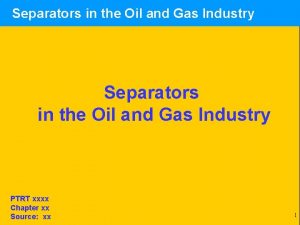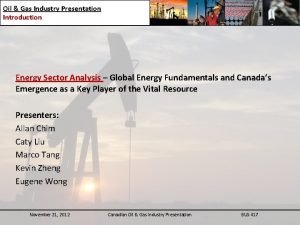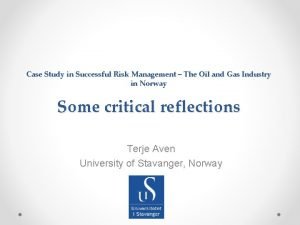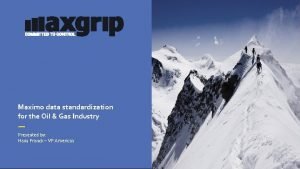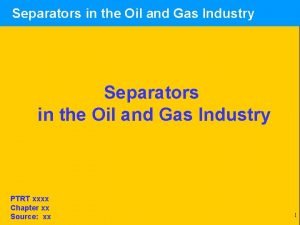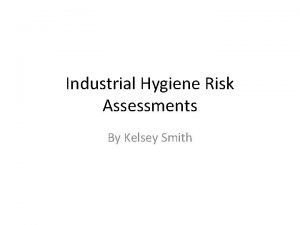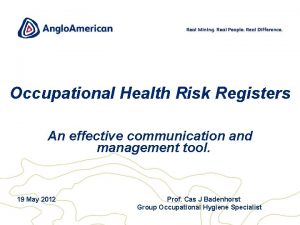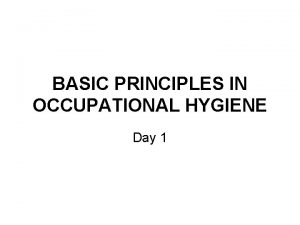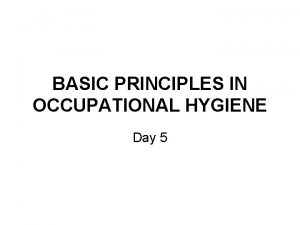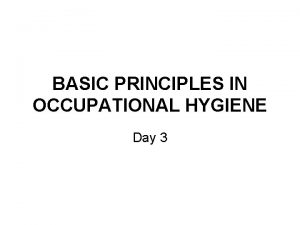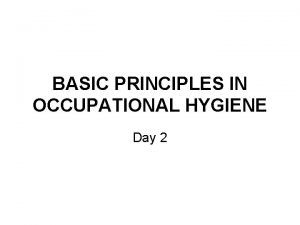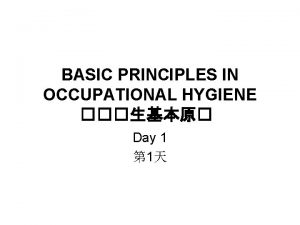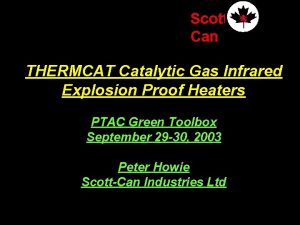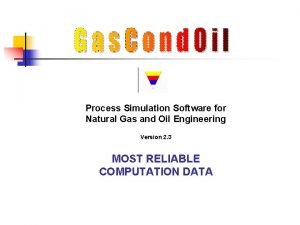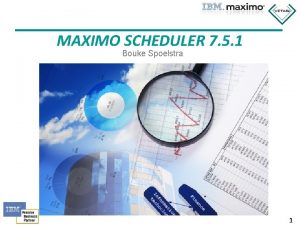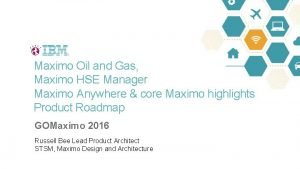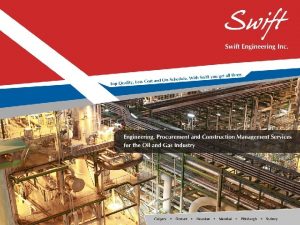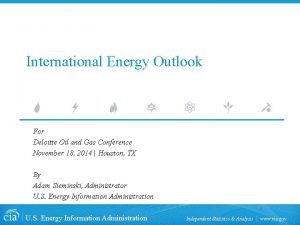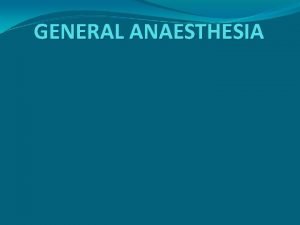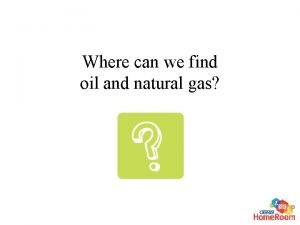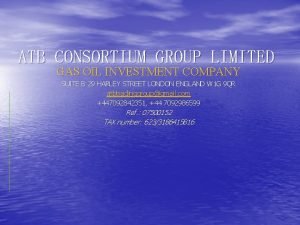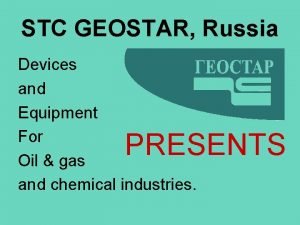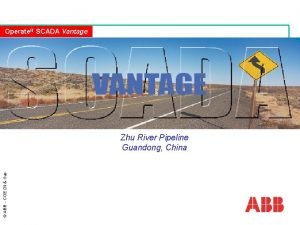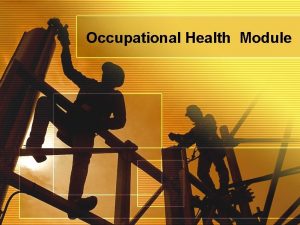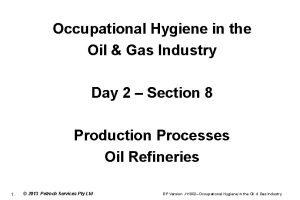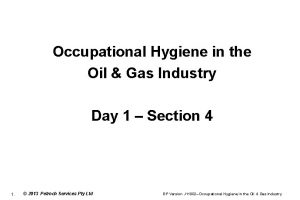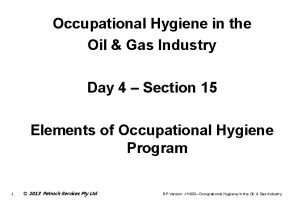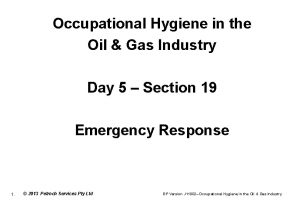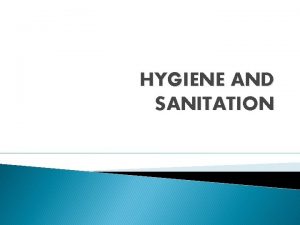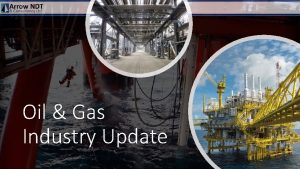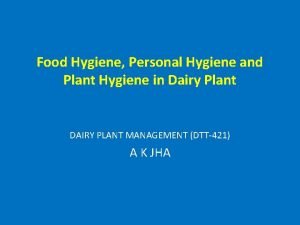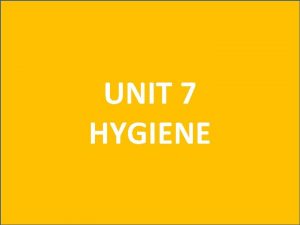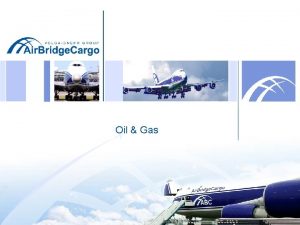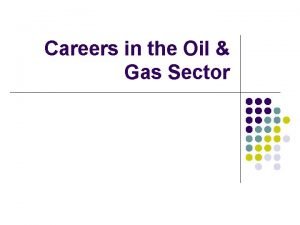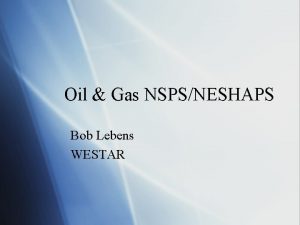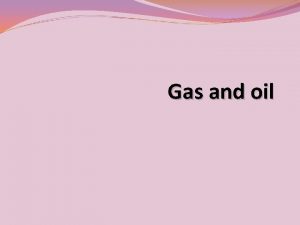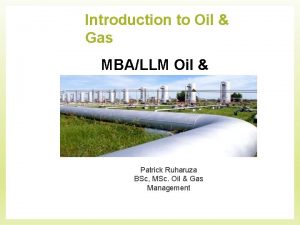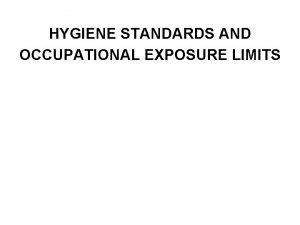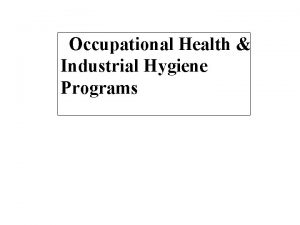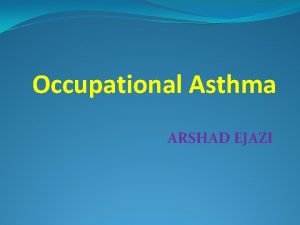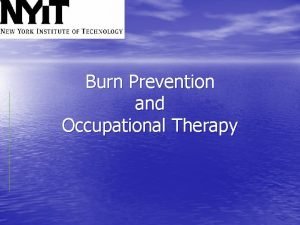Occupational Hygiene in the Oil Gas Industry Day






























- Slides: 30

Occupational Hygiene in the Oil & Gas Industry Day 3 – Section 12 Distribution to the supply network Terminals, Lube Oil Blend Plants, Depots 1. © 2013 Petroch Services Pty Ltd BP Version J 11002– Occupational Hygiene in the Oil & Gas Industry

Distribution Terminal 2. © 2013 Petroch Services Pty Ltd BP Version J 11002– Occupational Hygiene in the Oil & Gas Industry

Bottom loading – fill lines and vapour line 3. © 2013 Petroch Services Pty Ltd BP Version J 11002– Occupational Hygiene in the Oil & Gas Industry

Vapour Recovery Unit - VRU 4. © 2013 Petroch Services Pty Ltd BP Version J 11002– Occupational Hygiene in the Oil & Gas Industry

Drum Loading Fuel & Solvent Drum Filling 200 litre drum nominal standard size, formerly 44 Imperial gallon drum, or in the US known as the 50 (or 55) US Gallon drum. ) 5. © 2013 Petroch Services Pty Ltd BP Version J 11002– Occupational Hygiene in the Oil & Gas Industry

Drum filling using a stub High potential exposure via inhalation and skin contact. Note: no vapour extraction 6. © 2013 Petroch Services Pty Ltd BP Version J 11002– Occupational Hygiene in the Oil & Gas Industry

Vapour extraction systems 7. © 2013 Petroch Services Pty Ltd BP Version J 11002– Occupational Hygiene in the Oil & Gas Industry

Drum fill (200 L) line 8. © 2013 Petroch Services Pty Ltd BP Version J 11002– Occupational Hygiene in the Oil & Gas Industry

Packaged Goods • Small containers 20 L, 5 L, 1 L, for domestic market • Usually automated line, mostly lubes and solvents, pre-labelled containers • Little exposure to VOC, • Noise of empty cans or pneumatic handling systems Air silencer 9. © 2013 Petroch Services Pty Ltd BP Version J 11002– Occupational Hygiene in the Oil & Gas Industry

Rail Tank Car Loading • Daily loading schedules vary considerably; operators generally do this task for only several hours per day. • During top or bottom loading of rail cars, operators exposure to gasoline vapours at gantry level during opening /closing hatches and checking fill levels. • At the track level, exposures can occur in the connection/disconnection of hoses. • Exposures varies greatly depending on degree of enclosure and automation, volumes filled, ambient weather conditions, and any occasional spills. • Every effort should be made to avoid standing in the vapour plume. 10. © 2013 Petroch Services Pty Ltd BP Version J 11002– Occupational Hygiene in the Oil & Gas Industry

Marine Loading/Discharge – Ships, Barges • Wharf operations – loading by hose or Chiksan arm • “Open” Loading - tank tops, ullage ports, dip hatches are left open. Displaced hydrocarbon vapours are vented near the deck level. Crew can be exposed during connection/disconnection of product lines, or when leaning over open hatches to check fill levels, and during tank dipping • “Closed” Loading - automatic ullage measurement installed, ullage ports and hatches kept closed. Displaced vapours are vented at a remote point. Manual ullage measurements, and tank samples taken through open hatch. 11. © 2013 Petroch Services Pty Ltd BP Version J 11002– Occupational Hygiene in the Oil & Gas Industry

Lube Oil Blend Plant (LOBP) • Base oils are mixed with additives to produce finished Lube Oils – Castrol, BP, Mobil, Valvoline • LOBP - blend troughs (with or without extraction), heating ovens for additives, filling lines, warehouse, forklifts. • Some lube additives can decompose with excessive heat and produce noxious sulphur compounds 12. © 2013 Petroch Services Pty Ltd BP Version J 11002– Occupational Hygiene in the Oil & Gas Industry

Lube Oil Blend Plant (LOBP) • Issues – Noise, manual handling, skin exposure to additives, fumes, dust, oil mist during air blowing of lines, insulated lines, steam. • Product sold in 200 L drums for large industrial uses, 20 L for small industrial users, 5 L for domestic users and retail market 13. © 2013 Petroch Services Pty Ltd BP Version J 11002– Occupational Hygiene in the Oil & Gas Industry

Grease Manufacture • Grease manufactured in pressurised, heated kettles. • Raw materials - base lube oils, additives, thickeners, Calcium Base, Soda Base, Aluminium Base, Lithium Base, Complex Soaps. • Main issues – – manual handling of the additives (usually in 200 L drums), handling of heavy hoses, fugitive emissions from the kettles. additives and their decomposition products (refer to suppliers’ MSDS). – noise from the pumps, heat from the kettles 14. © 2013 Petroch Services Pty Ltd BP Version J 11002– Occupational Hygiene in the Oil & Gas Industry

Waste Product Recovery • Terminal Waste Treatment Facilities • All terminals and depots have stormwater runoff and oil recovery facilities to treat waste petroleum products from spills, overflows, wash-downs, tank bottom draining, etc. • Similar to refinery but on a smaller scale, waste oil recovery skimmer and water treatment. The waste oil is pumped to the slops tank. 15. © 2013 Petroch Services Pty Ltd BP Version J 11002– Occupational Hygiene in the Oil & Gas Industry

Waste Product Recovery • Waste recovery- emptying road tanker contents for change of service • Emptying damaged or leaking drums • Return of product from pump-out of customers tanks e. g. service station tanks (due to leakage, contamination, change of service). • Slops are blended off into finished products, returned to refinery for reprocessing, or sold off to waste recovery/recycling companies. 16. © 2013 Petroch Services Pty Ltd BP Version J 11002– Occupational Hygiene in the Oil & Gas Industry

LPG Terminal and Filling Plants • LPG receiving bay, storage bullets or spheres, a cylinder filling carousel and a loading bay. • Filling line may contain radiation (gamma) level gauges for the filling operation. • Gas cylinder refurbishing operations - includes grit blasting and spray painting. • Utilities - pumps and compressors 17. © 2013 Petroch Services Pty Ltd BP Version J 11002– Occupational Hygiene in the Oil & Gas Industry

Coastal Bulk Plant (CBP) 18. © 2013 Petroch Services Pty Ltd BP Version J 11002– Occupational Hygiene in the Oil & Gas Industry

Depots 19. © 2013 Petroch Services Pty Ltd BP Version J 11002– Occupational Hygiene in the Oil & Gas Industry

Depot fill stand Top Spear Loading Gasoline & Diesel 20. © 2013 Petroch Services Pty Ltd BP Version J 11002– Occupational Hygiene in the Oil & Gas Industry

Other Potential Hazards Moisture forming ice on LPG line due to cooling of line from expanding LPG Liquid 21. © 2013 Petroch Services Pty Ltd BP Version J 11002– Occupational Hygiene in the Oil & Gas Industry

Bad products, working conditions, and supervision 22. © 2013 Petroch Services Pty Ltd BP Version J 11002– Occupational Hygiene in the Oil & Gas Industry

Poor work conditions 23. © 2013 Petroch Services Pty Ltd BP Version J 11002– Occupational Hygiene in the Oil & Gas Industry

Poor work conditions – bad design 24. © 2013 Petroch Services Pty Ltd BP Version J 11002– Occupational Hygiene in the Oil & Gas Industry

Occupational Hygiene Issues a) Hazardous Substances – Finished petroleum products this requires a chemical inventory and MSDS information – Purchased chemicals and products – treatment chemicals, additives, cleaning agents - this requires a chemical inventory and MSDS information – Generated hazardous substances such as welding fume, oil mists – Generated waste and waste disposal b) Thermal Environment - general environment & location [Grease plants use heated pressurised kettles] 25. © 2013 Petroch Services Pty Ltd BP Version J 11002– Occupational Hygiene in the Oil & Gas Industry

Occupational Hygiene Issues c) Noise - fire pumps, filling lines, pumps, vehicles, maintenance activities. Utilities boilers, compressors, and generators. d) Asbestos and Other Fibres: Insulation (acoustic and thermal) e) Ergonomic hazards associated with any facility f) Radiation: Ionizing, Non-ionizing, Lighting g) Maintenance Hazards. includes confined spaces hazards. h) Other Hazards – Generally terminals and depots are located in populated areas close to customers i) Environmental hazards 26. © 2013 Petroch Services Pty Ltd BP Version J 11002– Occupational Hygiene in the Oil & Gas Industry

Health Hazards of Some Petroleum Operations Tank Cleaning - Hydrocarbons, Noise, lead (alky lead), PAH (oils), confined spaces, ergonomics (manual handling), hydro blasting and water washing tanks. Use of compressed air (breathing air) Tank repairs - Hydrocarbons, Noise, lead (alky lead), lead based paints, epoxy paints, confined spaces, welding fumes, dust Repair of tank floors, grinding, welding, grit blasting, repainting internals Maintenance/Workshop - Cleaning chemicals, carbon monoxide 27. © 2013 Petroch Services Pty Ltd BP Version J 11002– Occupational Hygiene in the Oil & Gas Industry

Health Hazards of Some Petroleum Operations Warehouse operations - CO, forklifts, ergonomics (manual handling) movement of drums, loading trucks Waste product recovery, drum cleaning - Hydrocarbons, Noise, ergonomics (manual handling) Fuel Testing Laboratory - Hydrocarbons, Noise, ergonomics (manual handling), alkyl lead, chemicals, Engine laboratory (knock engine operators), lab technicians/chemists 28. © 2013 Petroch Services Pty Ltd BP Version J 11002– Occupational Hygiene in the Oil & Gas Industry

Health Hazards of Some Petroleum Operations Boiler house - Noise, Asbestos insulation, SMF insulation, Water treatment chemicals Cooling towers - Water treatment chemicals, Legionella Waste water treatment - Water treatment chemicals, hydrocarbons Drum fill operations - Hydrocarbons, Noise, ergonomics (manual handling) – Various types of filling Tank truck fill operations & driving - Hydrocarbons, Noise, ergonomics (manual handling), driver fatigue – Various types of loading Rail car fill operations - Hydrocarbons, Noise, ergonomics (manual handling) – Various types of loading Ship loading operations - Hydrocarbons, Noise, ergonomics (manual handling) - Various types of loading 29. © 2013 Petroch Services Pty Ltd BP Version J 11002– Occupational Hygiene in the Oil & Gas Industry

End of Section 12 Distribution 30. © 2013 Petroch Services Pty Ltd BP Version J 11002– Occupational Hygiene in the Oil & Gas Industry
 Day 1 day 2 day 3 day 4
Day 1 day 2 day 3 day 4 Types of separators in oil and gas industry
Types of separators in oil and gas industry [email protected]
[email protected] Risk management case study oil and gas industry
Risk management case study oil and gas industry Standardization in oil and gas industry
Standardization in oil and gas industry Types of separators in oil and gas industry
Types of separators in oil and gas industry Hygiene risk assessment
Hygiene risk assessment Occupational hygiene programme template
Occupational hygiene programme template Basic principles of occupational hygiene
Basic principles of occupational hygiene Principles of occupational hygiene
Principles of occupational hygiene Basic principles of occupational hygiene
Basic principles of occupational hygiene Basic principles of occupational hygiene
Basic principles of occupational hygiene Site:slidetodoc.com
Site:slidetodoc.com Day 1 day 2 day 817
Day 1 day 2 day 817 Identification test of emulsion
Identification test of emulsion Occupational therapy day
Occupational therapy day Catalytic heater oil and gas
Catalytic heater oil and gas Oil and gas process simulation software
Oil and gas process simulation software Maximo job scheduling
Maximo job scheduling Gomaximo
Gomaximo Madagascar oil and gas
Madagascar oil and gas Full suite company
Full suite company Deloitte webmail outlook
Deloitte webmail outlook Oil gas partition coefficient inhaled anesthetics
Oil gas partition coefficient inhaled anesthetics Hitachi vantara oil and gas
Hitachi vantara oil and gas Drops oil and gas
Drops oil and gas Uses of oil and gas
Uses of oil and gas Atb oil and gas
Atb oil and gas Echometer oil and gas
Echometer oil and gas Abb scada software
Abb scada software Osu oil and gas accounting conference
Osu oil and gas accounting conference

